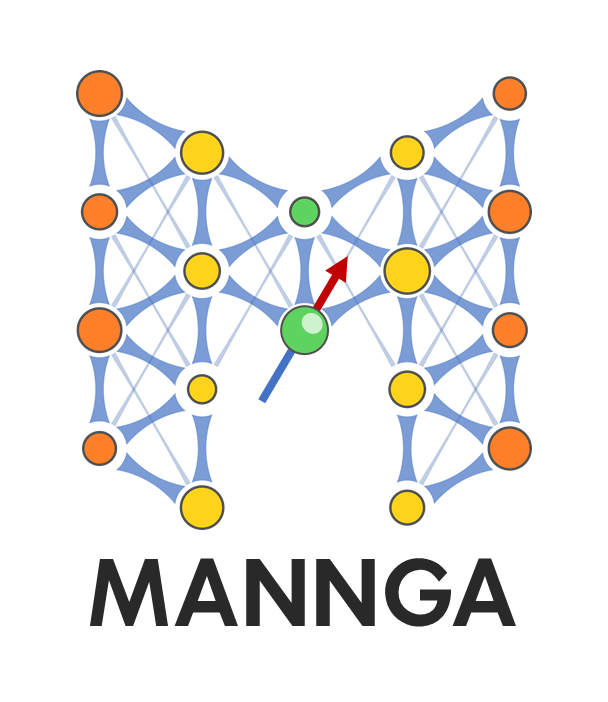
About
In MANNGA, we seek to explore and challenge the limits of spin-based devices and their energy efficiency. This will be achieved by combining two inherently energy-efficient technology paradigms: (i) magnonics (using spin waves – low energy magnetic excitations – to process signals and data) and (ii) neuromorphic computing (using large-scale integrated systems and analog circuits to solve data-driven problems in a brain-like manner). Going well beyond existing paradigms, we will use nanoscale chiral magnonic resonators (CMRs) as building blocks of artificial neural networks. The power of the networks will be demonstrated by creating magnonic versions of field programmable gate arrays, reservoir computers, and recurrent neural networks. The ultimate efficiency of the devices will be achieved by (a) maximising their magnetic nonlinearity (via spin wave power focusing within chiral magnonic resonators of minimal intrinsic loss); (b) using epitaxial yttrium iron garnet (YIG), which has the lowest known magnetic damping allowed by physics, for thin film magnonic media and resonators; and (c) using wireless delivery of power (minimising Ohmic loss in interconnects). Sensitive to the resonators’ micromagnetic states, such artificial neural networks will be conveniently programmable and trainable within existing paradigms of magnetic data storage. The latter includes magnetic random-access memory (MRAM), which is already compatible with CMOS, while compatibility with other technology paradigms of spintronics will also be sought, explored, and exploited.
Thereby, the key ambition of our proposed very forward-looking research programme is to develop and establish a novel, revolutionary class of energy-efficient spin-based components and devices for use in green high-tech data communication, processing, and storage technologies, thereby helping unlock the full potential of spintronics.
This ambition will be achieved via meeting the following research and innovation objectives (RIOs).
- RIO1. To demonstrate and to optimise CMR-based devices for nonreciprocal and nonlinear spin-wave phase modulation, using Fabry-Perot and dark-mode resonances.
- RIO2. To demonstrate and optimise complete chiral magnonic logic gates inductively coupled to external microwaves and with control elements based on those from RIO1.
- RIO3. To implement YIG CMRs within devices from RIO1 and RIO2, to optimise the device performance (in terms of reduced loss and enhanced nonlinearity).
- RIO4. To combine individual chiral magnonic logic gates and CMR arrays, from RIO2 and / or RIO3, with a global microwave clock field delivery.
- RIO5. To design and implement magnonic neural networks with diffraction-based routing of spin waves in liquid-phase-epitaxy (LPE) grown YIG media at lowest possible values of the bias magnetic field, and to assess prospects for developing their bias-free architectures.
- RIO6. To achieve reliable and scalable fabrication of 3" wafers of LPE YIG films of sub-µm thickness with the record-breaking perfection of their surface, microstructure, and low magnetic damping properties.
- RIO7. To implement standard and newly developed machine learning algorithms with magnonic neural networks from RIO5, and to assess prospects for further development of their CMR-based technology.
- RIO8. To ensure that the devices from RIO7 show repeatable performance, to measure their key performance indicators, and to compare the technology against those based on leading alternative physical platforms.